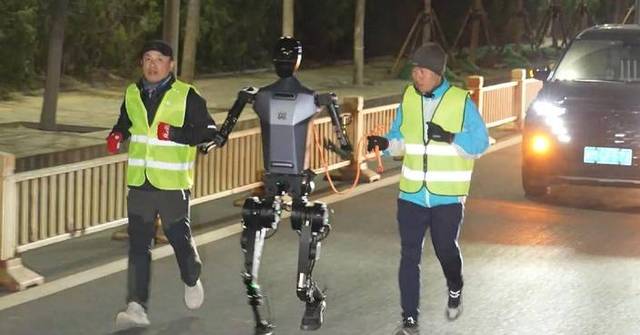The First Humanoid Robot Half-Marathon: A Technological Milestone in Beijing
The world’s first humanoid robot half-marathon is set to take place next week in the Beijing Economic-Technological Development Area, providing a groundbreaking platform for robotics companies to showcase their innovations in real-world scenarios. This event promises not only to revolutionize the way we perceive the capabilities of robots but also aims to ignite interest in the fields of robotics and artificial intelligence.
Race Format and Safety Measures
The half-marathon entails a grueling 21.0975-kilometer course where humanoid robots will run alongside human participants. For safety reasons, the robots will occupy a designated lane separated by barriers and greenbelts. This separation is crucial to ensuring that both human runners and robots can complete the race without the risk of accidents.
Support Infrastructure for Participants
To facilitate the performance of the robots, seven aid stations will be strategically placed along the course. These stations will primarily offer support to the teams participating in the event by providing battery replacements, safety equipment, and auxiliary tools. Wang Guolin, deputy head of the robot competition group, emphasized the importance of this support network, stating that it is vital for the smooth operation of the competition.
Real-World Testing Opportunities
Traditionally, robots are evaluated in controlled environments; however, this half-marathon presents a unique opportunity for developers to assess their robots in complex and unpredictable scenarios. As technology advancements continue, the ability for robots to navigate such challenges becomes increasingly important. Liang Liang, deputy director of the Management Committee of the Beijing Economic-Technological Development Area, remarked, “The robot marathon represents a marathon of technology and industry, symbolizing our pursuit of technological advancement.”
Performance Metrics for Evaluation
The half-marathon course poses a significant challenge, requiring robots to engage in long-distance bipedal locomotion while adapting to varied terrain and potential unforeseen circumstances. This demands high performance in key areas such as sensor accuracy, chip computing speed, and algorithmic intelligence. Organizers have pointed out that many participating robots were not originally designed for endurance activities, making this an unprecedented opportunity for rigorous testing.
Comprehensive Assessment of Robotics
The competition offers an invaluable chance to evaluate robot locomotion capabilities, stability, posture, energy efficiency, and control algorithms. Wang highlighted the potential for this event to foster collaboration and innovation in the embodied robotics industry, showcasing the collective vision for the future of technology.
Preparations Underway for Race Day
As the anticipated race day approaches, participating robots have completed preliminary track tests and are in the final stages of preparation. This historic event is not just a showcase, but a step toward understanding how humanoid robots can integrate into real-world applications. With the evolving landscape of technology and robotics, this half-marathon event could pave the way for further advancements in the industry.
Stay updated on the latest developments in robotics and technology by following related trends and insights. For more information about robotics advancements and their impact on our future, visit [Robotics Today](https://www.roboticstoday.com) and explore the exciting world of innovative technology.
This article provides a comprehensive overview of the upcoming humanoid robot half-marathon in Beijing while ensuring a neutral and informative tone. It consists of structured sections to enhance readability and includes a backlink for further reading.
